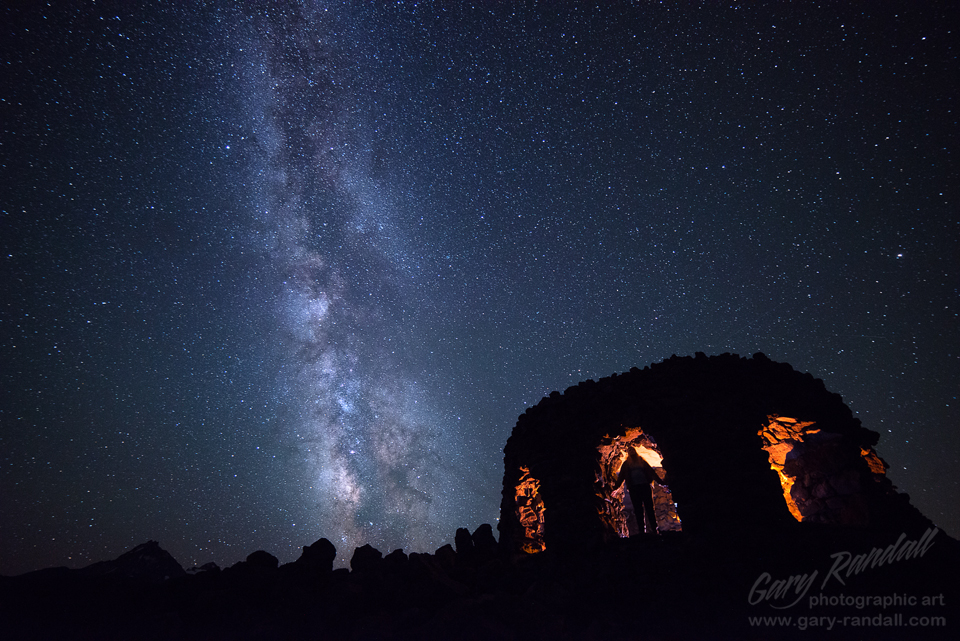The Fortress of the Night Sky – The Dee Wright Observatory at Night
The car doors closes with a thud and the interior light’s soft glow that’s been allowing us to prepare our gear turns off in an instant leaving our senses to rely on sound as all sight goes away in the black of the night. I put my arm out to reach for Darlene as we both let our eyes adjust to the night sky. The summer breeze wisps softly around us as the stars appear as our eyes adjust. Darlene was the first to break the silence when she lets out a sigh as the Milky Way appears in front and above us. “Wow” is all she says.McKenzie Pass Oregon
We lock arms and shoulder our gear, turn on our headlamps and walk into the night and up the path jagged volcanic rock bordered path to the rocky structure that is the Dee Wright Observatory on the McKenzie Pass through the Cascade Mountains in Oregon.
The structure was built in 1937 and is made from the lava rock chunks that make up the surrounding area. The observatory sits amid a barren rocky ancient lava flow very much like the black basaltic a’a lava flows in Hawaii. Because it’s made from the area on which it sits it looks as if it is rising from chaos to be assembled in a wholly organic yet orderly fortress like structure. it was made as a place where people can come to view the beauty of the area from a majestic prominence, and yet we couldn’t see past the light of our lamps.
The arched openings showed the warm flickering light from a candle that was placed inside by another visitor for the purpose of making photographs. How fortunate we think as we walk up to get a view of the Milky way in the south sky shooting up and over the observatory.
I’m fortunate that Darlene likes the night time outdoors as much as I do. We decided to pose her inside of one of the arched openings. We get a few shots until the other photographer takes her candle and leaves at which point we start using a flashlight. We light paint the outside for a while. We go inside and we light paint inside for a while. We’re taking shots, checking them out on the backs of our cameras, adjust and try to perfect it before moving on the the next shot. We’re like kids in a playground.
We finished the shoot on the observation deck at the top of the structure, in the center of which stood a raised pedestal with a 36″ diameter bronze azimuth-like “peak finder” compass. On its face are lines that help the observer find prominent landmarks, such as the incredible volcanic peaks of the Central Cascade Mountain Range. Belknap Crater from which the lava which flowed over the area is where the rock that made the lava flow came from. Then there is North, Middle and South Sister Mountains to the south, the amazing jagged peak of Mount Washington, the scenic Mount Jefferson, Mount Hood, to the north and Black Butte to the east. Several more are marked on the circular bronze disc with an arrow pointing in their direction.
I light paint the disc as a foreground for a Milky way photo and then we decide to just turn off the lights and look at the stars for a few minutes before heading back down the rock path and back into the glow of the light of the car.
I love the night.

